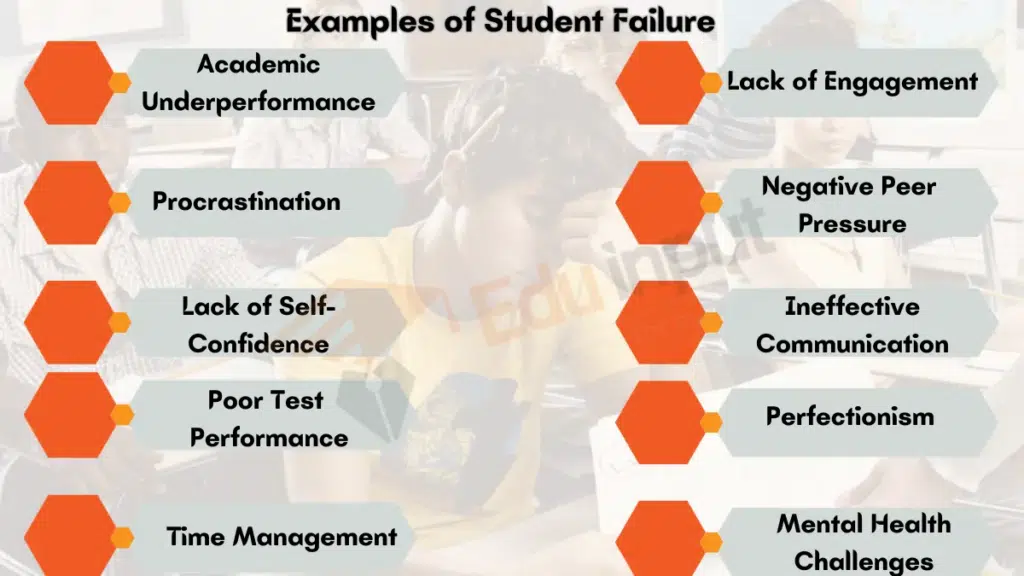10 Examples of Student Failure
Failure in students is an integral part of the learning process. It’s a stepping stone toward success, but it can be discouraging, especially for students.
As educators, parents, and mentors, it’s essential to understand the various forms of failure that students may encounter and how to help them overcome these challenges.
In this blog post, we’ll explore ten examples of student failure and offer insights on how to support students in their journey towards success.

Examples of Student Failure
1: Academic Underperformance
Academic underperformance is a common form of failure among students. It results from a variety of factors, including lack of motivation, study skills, or a challenging curriculum.
To overcome this, students seek help from teachers, tutors, or academic support services.
Encouraging good study habits and setting realistic goals can also make a significant difference.
2: Procrastination
Procrastination leads to missed deadlines, poor time management, and ultimately, academic failure.
Students combat this by creating a study schedule, setting priorities, and breaking tasks into smaller, manageable parts.
3: Lack of Self-Confidence
A lack of self-confidence can hinder a student’s ability to excel. Encourage students to focus on their strengths, set achievable goals, and provide positive reinforcement to help build self-confidence.
4: Poor Test Performance
Failing exams can be demotivating for students.
To improve test performance, students can adopt effective study strategies, such as active recall, practice tests, and seeking assistance from teachers when needed.
5: Difficulty with Time Management
Managing time efficiently is crucial for academic success. Students can benefit from using time management tools like calendars and to-do lists.
Learning to prioritize tasks and avoid distractions is also essential.
6: Lack of Engagement
Students who feel disengaged from their studies often struggle with failure.
Encouraging active participation in class, exploring diverse interests, and connecting learning to real-life applications help rekindle their interest.
7: Negative Peer Pressure
Peer pressure lead students down the wrong path, affecting their grades and behavior.
Teaching students to make wise choices and encouraging open communication with trusted adults can help them resist negative influences.
8: Ineffective Communication
Poor communication skills hinder academic and social success. Encourage students to develop strong communication skills through public speaking, writing, and active listening.
9: Perfectionism
Perfectionism leads to paralysis and excessive stress. Students should understand that it’s okay to make mistakes and learn from them. Setting realistic standards and focusing on progress, not perfection, is essential.
10: Mental Health Challenges
Mental health issues can significantly impact a student’s performance. It’s vital to prioritize students’ well-being, recognize signs of distress, and provide access to counseling or support services when needed.
Failure is a natural part of a student’s journey, but it’s essential to help them overcome these obstacles and learn from their experiences.
By addressing academic underperformance, procrastination, self-confidence issues, poor test performance, time management, engagement, peer pressure, communication skills, perfectionism, and mental health challenges, we can empower students to embrace failure as a stepping stone towards success.
Encourage them to persevere, learn from their mistakes, and ultimately achieve their full potential in both their academic and personal lives.



Leave a Reply